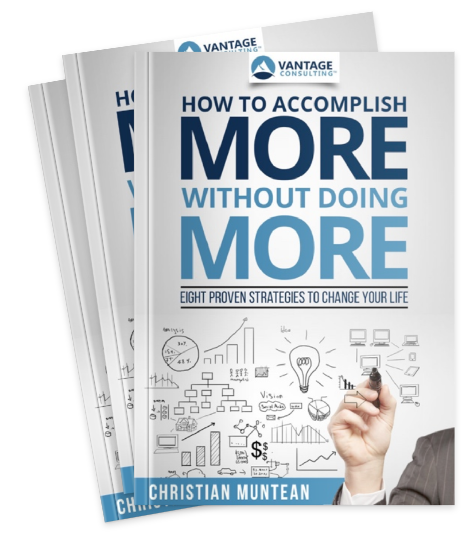Leadership Recovery: Why Intensity Without Recovery Is Self-Sabotage

Leadership recovery begins with recognizing limits: “I work 100 hours a week,” he said proudly. I respect work ethic. But effort isn’t the outcome.
Many leaders imagine they’re operating like elite athletes—100% effort, all the time. But they misread the intensity of competition as an athlete’s norm, rather than the exception.
Elite athletes alternate intensity with recovery. That’s what keeps them performing. It’s amateurs who go all out, all the time—and burn out, get injured, or plateau.
The Overworking Leader: A Case Study in Diminishing Returns
My 100-hour-a-week friend has run a small business for 10 years. At peak, it generates about $1 million annually—in an industry with single-digit margins.
That’s a ton of work for an extraordinarily modest return.
His wife wanted him to work less. He had other passions he’d like to pursue. But assuming he slept at all, I don’t know how he had energy to maintain his marriage—or anything else that matters.
He conflated effort with results. They’re not the same.
His company wasn’t growing. He wasn’t building momentum. Just spinning his wheels and getting a poor return on his time and energy.
If he focused on results—and built in space for recovery—he’d gain traction. With less effort, he could multiply his return.
I know this because I see it all the time. My clients are doing exactly that. Leadership recovery isn’t optional; it’s strategic.
Rest Is a Performance Multiplier: A Second Leader’s Story
Another client came to me last year, maxed out. He owned a small seven-figure business, stressed, exhausted. Like the other man, his wife wanted him to work less. His doctor did too. So did he.
So… that’s what he did.
We clarified which activities mattered and dropped the ones that didn’t.
Within a year, he doubled into an eight-figure business.
“I’m not as stressed anymore. I don’t get angry like I used to. I sleep,” he told me. He takes real vacations. He unwinds.
Sustained growth requires systems and recovery. Grinding can produce growth—but rarely growth you can keep without burning out your health, your marriage, or your team. Leadership recovery strategies underpin sustainable scaling.
The Athletic Analogy: Strength and Skill Require Recovery
Indulge a fitness analogy. I was a strength and conditioning instructor for 12 years and have been in athletics most of my life.
Most gym workouts are designed to burn calories. They’re intentionally hard and metabolically inefficient. You might build some strength, but the goal is mostly to look better.
Bodybuilding is similar—maximum exertion and fatigue to grow muscle. But size doesn’t always mean strength. And it has nothing to do with skill. That’s why athletes don’t look like bodybuilders.
If you want to perform like an athlete, you need strength and skill. You have to work differently.
Athletes train for efficiency. Strength, speed, precision. They rarely push themselves to their max. When they do, it’s brief—and followed by recovery.
Powerlifters rest between sets, between workouts, and schedule macro rest every 6–8 weeks. Their motto? “Leave one rep in the tank.” They avoid fatigue on purpose.
In Brazilian Jiu-Jitsu—my sport—you learn to rest, to breathe, to be efficient during training, after training, and even in the middle of a fight.
Because you don’t build peak performance while exhausted. And you won’t win a fight with nothing in the tank.
Same with leadership. Leadership recovery is the secret weapon.
Leadership Needs Athletic-Style Recovery
Elite athletes don’t train to stay busy or burn calories. They train to perform. And they recover to stay dangerous.
Smart leaders do the same. Leadership recovery creates margin for clarity.
How Strategic Recovery Builds Real Leadership Strength
Rest isn’t selfish. Or lazy. It’s a performance strategy.
You can’t build strength, clarity, or resilience while running on fumes. My highest-performing clients scale not by grinding harder, but by focusing their intensity and recovering strategically—just like athletes. Effective leadership recovery tactics multiply impact.
And here’s the ROI: Most double or triple their business while freeing up time for family, health, and meaningful work. They don’t lose their drive. They stop wasting it.
Active Rest
Athletes know that doing nothing doesn’t equal recovery. Light, restorative activity does—stretching, walking, hiking, social time.
Most leaders are knowledge workers. It’s their brain that’s tired. Getting into your body resets it.
You don’t feel recharged after 30 minutes of doomscrolling. But five minutes outside? You come back awake, alert, and ready.
That’s active rest. Leadership recovery flourishes with active restoration.
Daily Recovery: Use the 90-Minute Rule
Your brain runs in 90- to 120-minute focus cycles (called the Ultradian Rhythm). Most leaders only get 1–2 good cycles a day. High performers protect those windows for their most important work.
After that, performance drops. That’s when you take a real 10-minute break—walk, breathe, move. Let your brain reset.
And when the workday ends—end it. Create a shutdown ritual. Change clothes. Go for a walk. Listen to music. Turn off notifications. Don’t check e-mail.
This isn’t soft. It’s what lets you return strong tomorrow. Leadership recovery is non–negotiable.
Weekly and Monthly Recovery: Shift Gears, Don’t Collapse
I was in Miami with a group of successful entrepreneurs. Many had learned the value of “landing the plane” on Fridays—wrapping up projects, easing into the weekend, being present with loved ones.
Weekly, carve out time that shifts your mental state. Monthly, block time to reflect. What’s working? What’s not? Where are you going? Leadership recovery planning happens in these reflections.
Don’t Save Recovery for Vacation
You can’t push for 12 months and expect one week in Mexico—while still checking email—to fix it. Energy doesn’t work like that. Recovery has to be regular.
Start Small. Be Consistent. Watch What Happens.
Already drowning?
Dump everything out of your head. Then ask:
“What’s the one thing I can do now that makes everything else easier or unnecessary?”
Block time. Do that one thing. That’s how you stop drowning. Splashing harder won’t help.
Same answer if you’re buried in urgent client work. Same answer for your team.
Start with one 10-minute break. Add one shutdown ritual. Then build from there.
Track what changes in your clarity, energy, and focus.
Odds are, your team will notice. Recovery doesn’t just make you better. It multiplies your impact.
And it models something people talk about but rarely experience:
A leader with drive and margin. Ambition without burnout. Leaders who recover well, lead well. Not just for a sprint. For the long haul.
Take good care,
Christian
Tired of burning the candle on both ends? But you still have drive and ambition? Here are two must have resources:
My e-book: How to Accomplish More Without Doing More (Free)
My actual book: Train to Lead (Best few bucks you’ll spend this year)
Categories
Get Christian’s Newest Book: Train to Lead

Download my free 10-page eBook:
How To Accomplish More Without Doing More:
Eight Proven Strategies To Change Your Life
Discover how to save eight hours during your workweek-even if you're too busy to even think about it. The resource every maxed out executive needs.